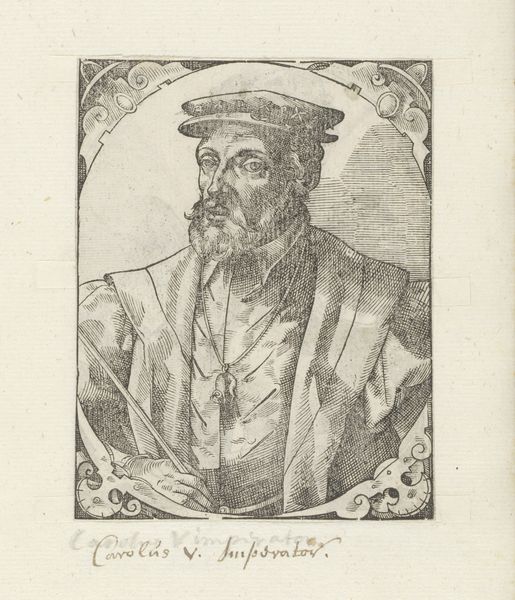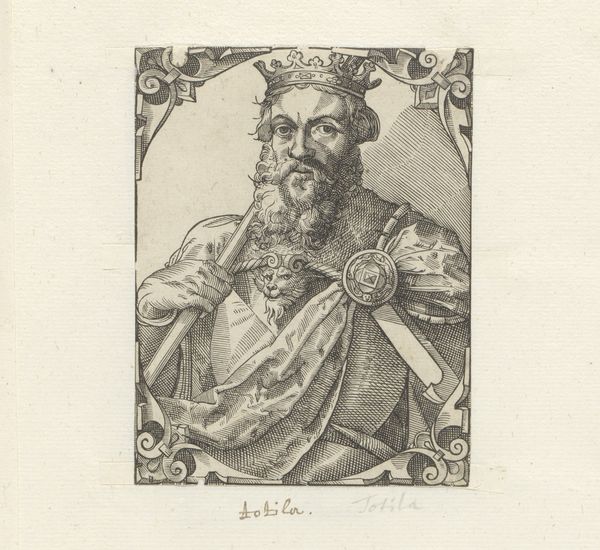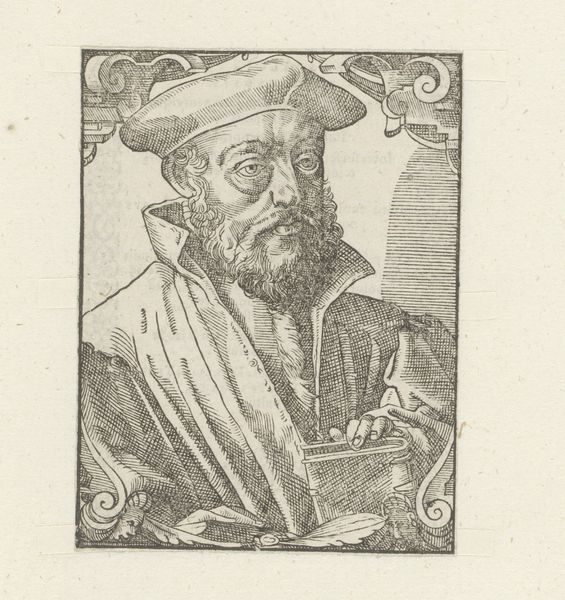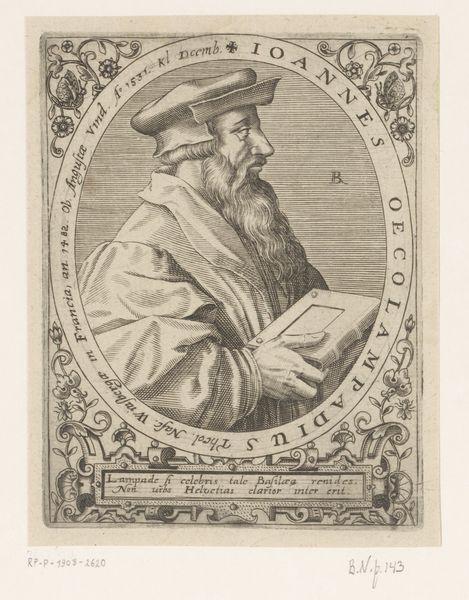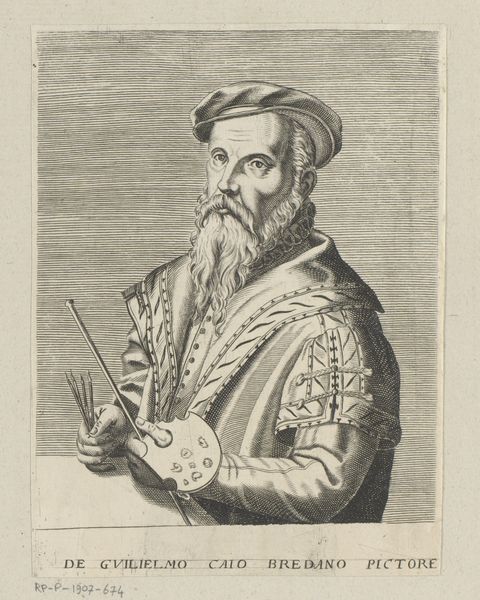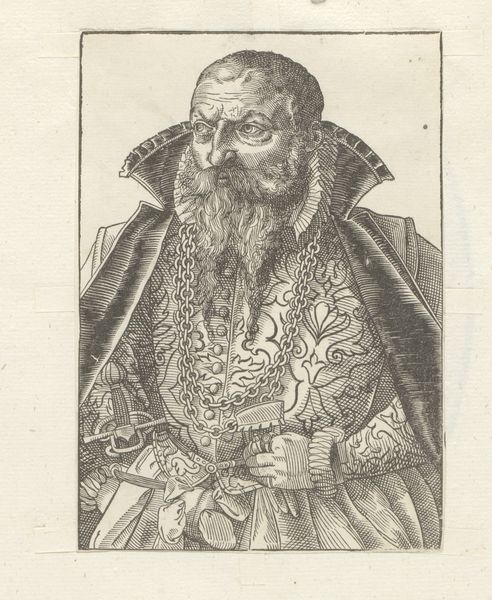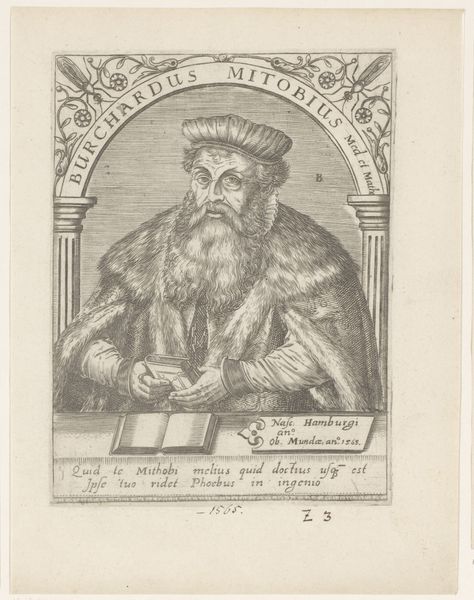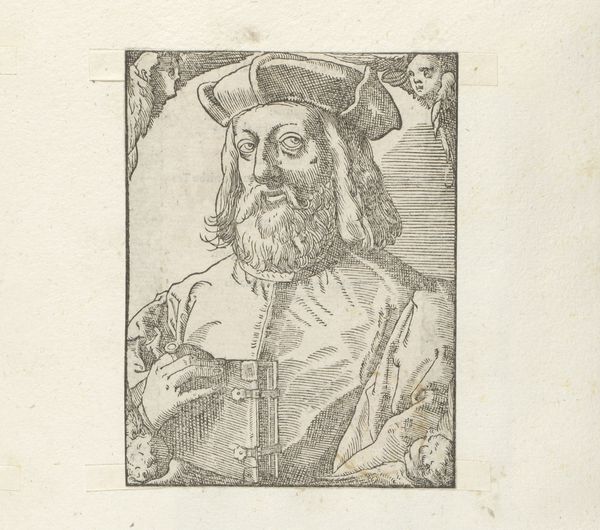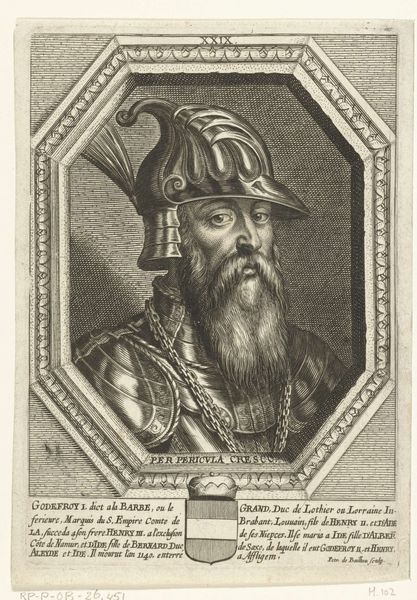
print, engraving
#
portrait
#
medieval
# print
#
old engraving style
#
figuration
#
11_renaissance
#
line
#
history-painting
#
engraving
Dimensions: height 109 mm, width 82 mm
Copyright: Rijks Museum: Open Domain
Editor: Here we have an engraving dating back to sometime between 1549 and 1575. It's a portrait of Saladin by an anonymous artist. I’m struck by the level of detail achieved with such fine lines. The inscription "Victoria Testis" catches my eye, but I’m not sure what to make of it. What’s your interpretation of this print? Curator: The phrase “Victoria Testis,” meaning "Victory is my witness", suggests this print participates in a visual rhetoric of power and justification. How might portraying Saladin, a significant figure from Islamic history, in a Renaissance context serve a political purpose? Consider the dynamics of cultural representation and appropriation at play here. Editor: I guess it's not necessarily a straightforward celebration then. The "Victoria Testis" could be a more nuanced commentary on power, right? The inclusion of what looks like an oil lamp raises even more questions. Curator: Precisely. The lamp adds a layer of symbolic complexity. How does the presence of the oil lamp affect the way this artwork can be considered in terms of both Islamic and Western history and mythology, given that Islamicate lamps frequently feature geometric motifs, which would not appear on this work? Is it there to "illuminate" something specific? Remember that in the Early Modern era, engravings like this weren’t simply artistic expressions; they served as historical records and political tools. Editor: So, instead of a simple portrait of a historical figure, it's loaded with symbolic and political messaging designed for a specific audience in a particular time. Curator: Exactly. The portrayal and its reception become intertwined with the power dynamics of the era. Now, how does knowing that affect your initial viewing experience? Editor: It adds so much more depth. I realize I need to think about who commissioned it, who would have viewed it, and what message they were intended to take away. It encourages me to really look beyond just the artistic technique and to appreciate the piece's role in a broader cultural and historical conversation.
Comments
No comments
Be the first to comment and join the conversation on the ultimate creative platform.
